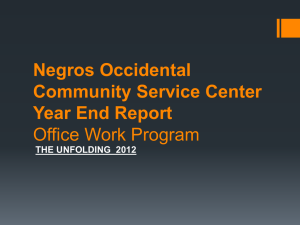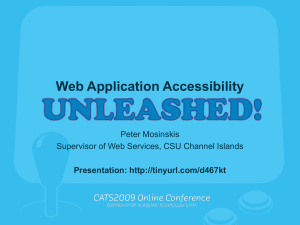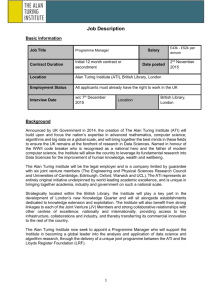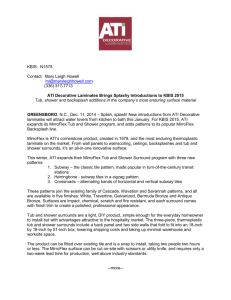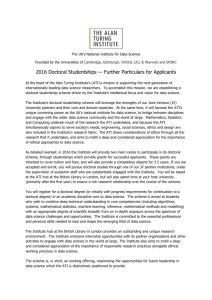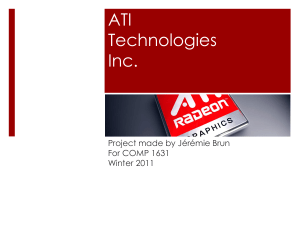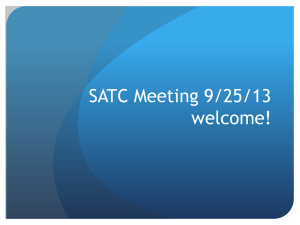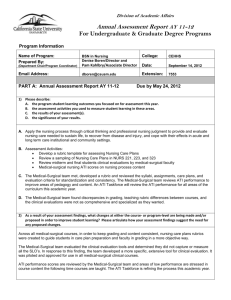Phase 2 of CSU`s Accessible Technology Initiative: From Policy to
advertisement
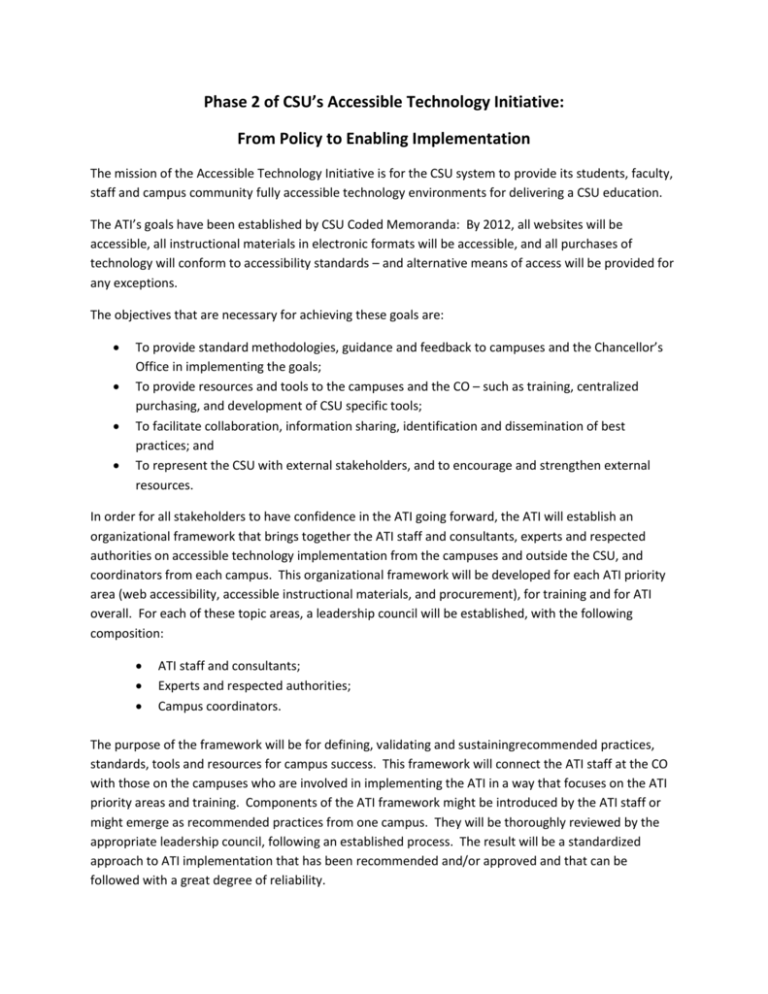
Phase 2 of CSU’s Accessible Technology Initiative: From Policy to Enabling Implementation The mission of the Accessible Technology Initiative is for the CSU system to provide its students, faculty, staff and campus community fully accessible technology environments for delivering a CSU education. The ATI’s goals have been established by CSU Coded Memoranda: By 2012, all websites will be accessible, all instructional materials in electronic formats will be accessible, and all purchases of technology will conform to accessibility standards – and alternative means of access will be provided for any exceptions. The objectives that are necessary for achieving these goals are: To provide standard methodologies, guidance and feedback to campuses and the Chancellor’s Office in implementing the goals; To provide resources and tools to the campuses and the CO – such as training, centralized purchasing, and development of CSU specific tools; To facilitate collaboration, information sharing, identification and dissemination of best practices; and To represent the CSU with external stakeholders, and to encourage and strengthen external resources. In order for all stakeholders to have confidence in the ATI going forward, the ATI will establish an organizational framework that brings together the ATI staff and consultants, experts and respected authorities on accessible technology implementation from the campuses and outside the CSU, and coordinators from each campus. This organizational framework will be developed for each ATI priority area (web accessibility, accessible instructional materials, and procurement), for training and for ATI overall. For each of these topic areas, a leadership council will be established, with the following composition: ATI staff and consultants; Experts and respected authorities; Campus coordinators. The purpose of the framework will be for defining, validating and sustainingrecommended practices, standards, tools and resources for campus success. This framework will connect the ATI staff at the CO with those on the campuses who are involved in implementing the ATI in a way that focuses on the ATI priority areas and training. Components of the ATI framework might be introduced by the ATI staff or might emerge as recommended practices from one campus. They will be thoroughly reviewed by the appropriate leadership council, following an established process. The result will be a standardized approach to ATI implementation that has been recommended and/or approved and that can be followed with a great degree of reliability. To set this up and manage it, the ATI will need one staff person for each leadership council, or topic area. The ATI staff will be responsible for managing the leadership council, overseeing communications and activities related to the topic area, taking the leadership on particular projects that might be developed by the leadership council, and for representing the ATI with respect to that topic. ATI’s second strategic priority will be to develop campus-based Centers for Excellence. Campuses that have excelled in a particular aspect of ATI implementation will be able to apply for grants to conduct research, develop model practices, publish materials or engage in other activities that will advance work in that area. The Centers for Excellence will allow the ATI to take advantage of expertise that is resident on the campuses to produce tools and resources that all campuses will be able to use without having to increase the staff at the CO. One of the first Centers of Excellence will be the CUDA lab (Center for Usability in Design and Accessibility at CSULB). ATI’s third strategic priority is to oversee the submission of annual reports from campuses regarding implementation of the three priority areas. The ATI provides guidelines, reviews the reports, provides individualized feedback to campuses and prepares a summary for each priority area. Going forward, the ATI will develop rubrics for reviewing the reports with the goal of following a formative evaluation process, providing campuses with feedback as to how far along they are in implementing significant milestones and phases and providing encouragement and resources for further progress. The rubrics will be vetted with subsets of the leadership councils for the ATI priority areas and will become the framework for measuring ATI progress.
